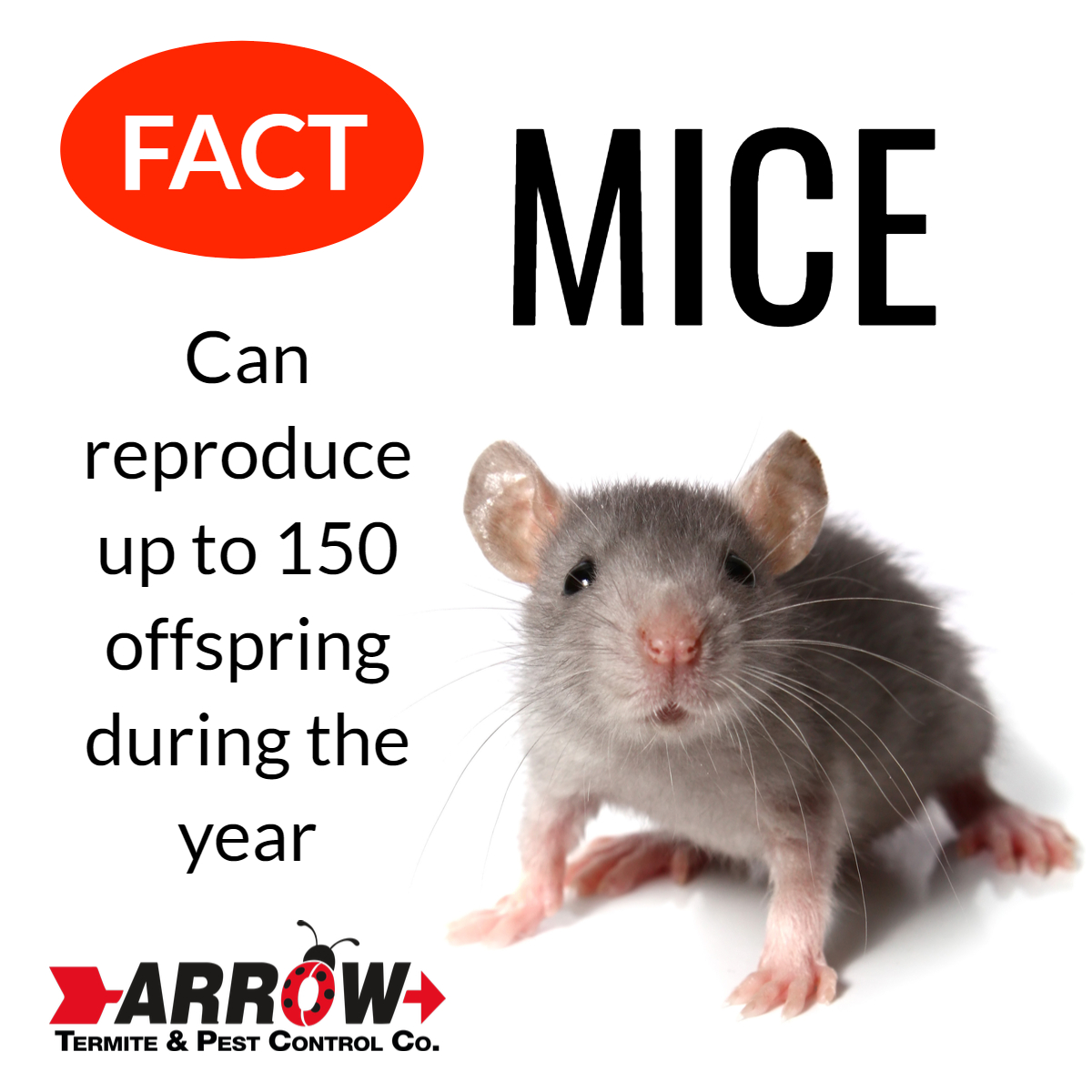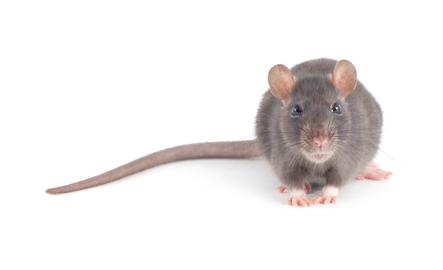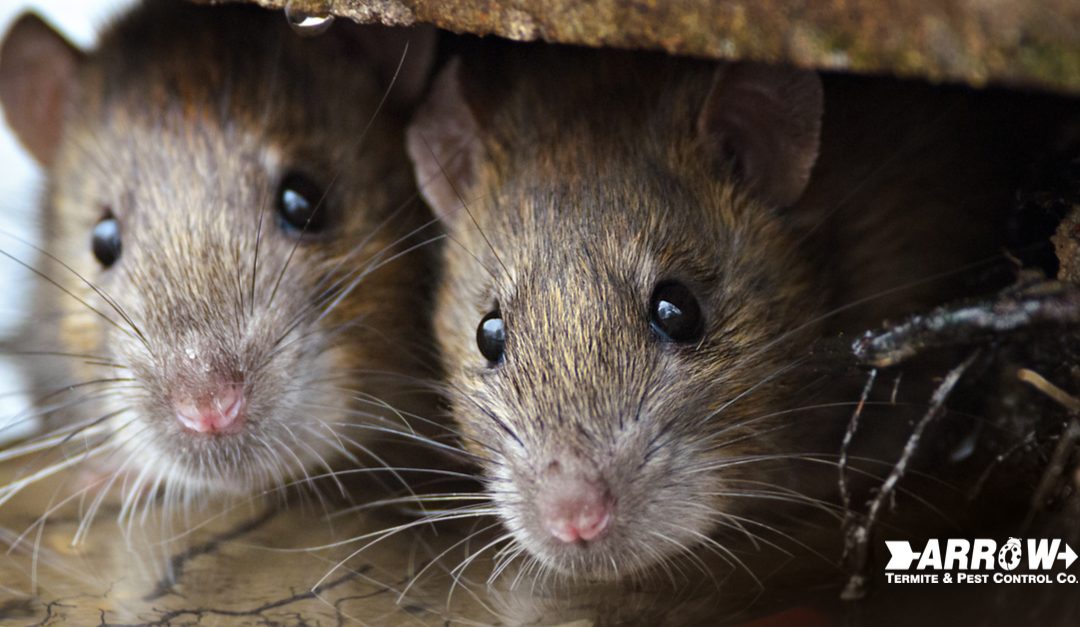Both rats and mice prefer warmth over cold. This means that when the weather outside starts to turn cold, rats and mice begin to case outhouses and other buildings. Rats can wiggle their way into gaps and holes as small as 1/2 inch. And if the hole is not yet 1/2-inch big, the rat can gnaw at it until it is. Mice can squeeze in through holes as small as 1/4 inch. And, like rats, mice will chew and gnaw at smaller holes until they are big enough to wiggle through. Also, rats are great swimmers. It is true that rats can swim through sewers and come up through toilet bowls or other drains. We’ve serviced many customers over the years that followed all the rodent prevention tips featured here but still had an invasion through their home plumbing system. It is not a common occurrence, but it can happen. Once inside, if the rodents can find food and water, then it is highly likely that they will stay and the rodent population will quickly grow. Do everything you can to prevent a rodent infestation in your home.
It can be quite unpleasant, disgusting, and frightening to see a rat or mouse in the house, but even worse than that, rodents can cause damage with their gnawing, nest-making, urinating, defecating, and potential for spreading disease. If you think you have mice or rats in your house, take a look at the top four things the pesky rodents are doing in your home. We highly recommend that your attic and home undergo a physical inspection from a licensed rodent exterminator each year.
Breeding & Birthing Litters
Rodents are prolific breeders, so populations can build very quickly in a home or building if the rats or mice have sufficient food, water, and shelter.
Rats: Each female can have up to 7 litters in 1 year, with up to 14 young in each litter. Rats are full-grown in about 4 weeks, which means that quite a few generations can be born in a single year from each female of the litter.
Mice: A house mouse can have up to 10 litters in a single year with about 6 young in each litter. (But there may be as many as 12-15 mice in a single litter). They are full-grown or adults within 7 weeks, so, if conditions are ideal, a mouse population can explode in just a few months.

Making a Nest
Rodents like to have a nice, soft, comfortable nest for birthing babies. So, rodents will use whatever they can find—old newspapers, clothes, fabric stored in cardboard boxes (easily chewed into), stacks of magazines, or even important files. Say goodbye to those items, too, it will be chewed to shreds. Even your drywall, insulation, and wiring is not safe. This can cause significant damage to your home and potentially cause a fire that ignites from the bared wires.
Hunting for Food
Before or after making a nest, you can expect that the rodent/s will roam your home in search of food. As it roams, it will urinate and drop its feces along the way, contaminating everything. If it makes its way to your pantry or food storage area, it is likely to walk on the food and its packaging. The next time you touch those items you are touching its urine trail as well. Rodents have very sharp teeth and will chew through packaging to get to food. It can chew through boxes and bags you may think are safe. Once a rat or mouse gets into the food, it can potentially be the source of many diseases including:

Salmonellosis: A disease that is transmitted when a person eats or drinks food or water that is contaminated by rodent feces that can cause diarrhea, fever, and abdominal cramps.
Other serious diseases: According to Centers for Disease Control, certain rodents can also directly transmit diseases such as the hantavirus pulmonary syndrome, hemorrhagic fever with renal syndrome, Lassa fever, leptospirosis, lymphocytic choriomeningitis, Omsk hemorrhagic fever, plague, rat-bite fever, South American arenaviruses, and tularemia.
Finding a Water Source
Rodents need water to survive. Some foods will provide them with some water, but they will also need free-standing water. Being resourceful, the rodents will drink the water in the bowl left on the floor for your cat or dog, water found at the base of a potted plant, or a slow-draining tub or sink.
Signs of Rodent Presence
When a rat or mouse decides to visit, it often goes unseen—at least at the start. Usually, signs that rats or mice are present include small droppings (feces) that look like tiny grains of rice that are found along walls or in places where food materials are present. You may also notice other destruction, such as chewed holes in boxes and bags of dry goods in a pantry, in pet food bags, or in bags of grass seed in the garage.
Close inspection along baseboards or near any holes in the floors, such as where radiator pipes come through, may show rub marks or gnawed areas where the rodents have chewed to gain free access. In hidden areas beneath cabinets, you may find small nest areas filled with shredded paper or wood shavings.
If you have pets, your dog or cat may exhibit alert behavior, sensing the presence of a rodent. And you may even hear sounds of scurrying or scratching in the walls or floors, especially at night when the house is silent and dark.


